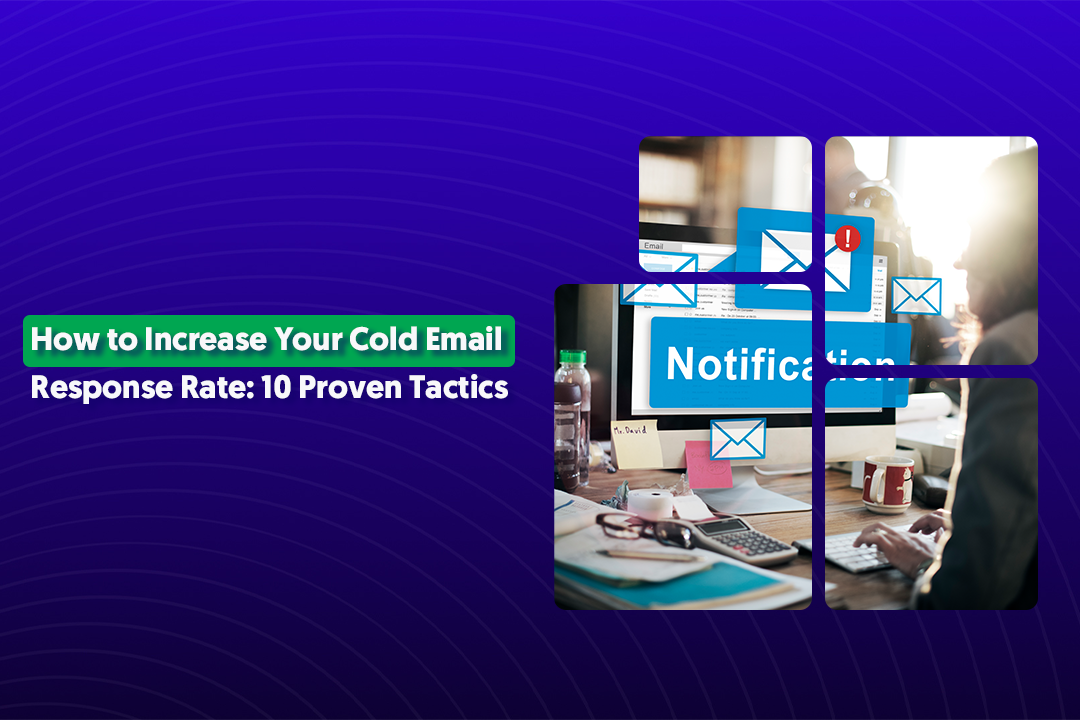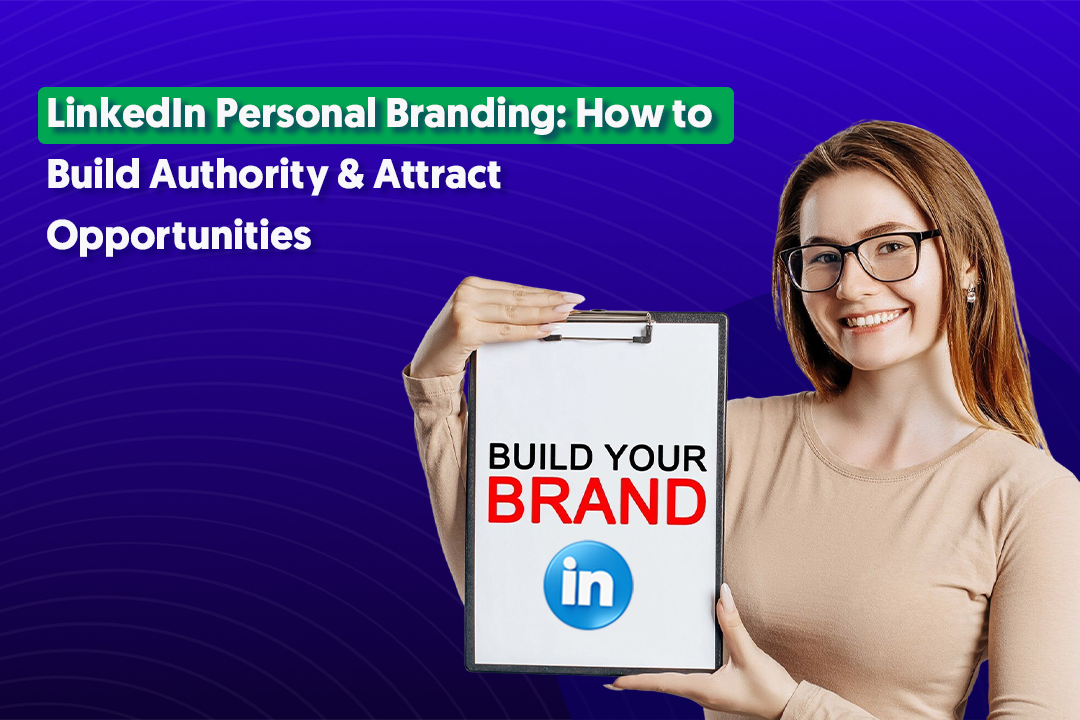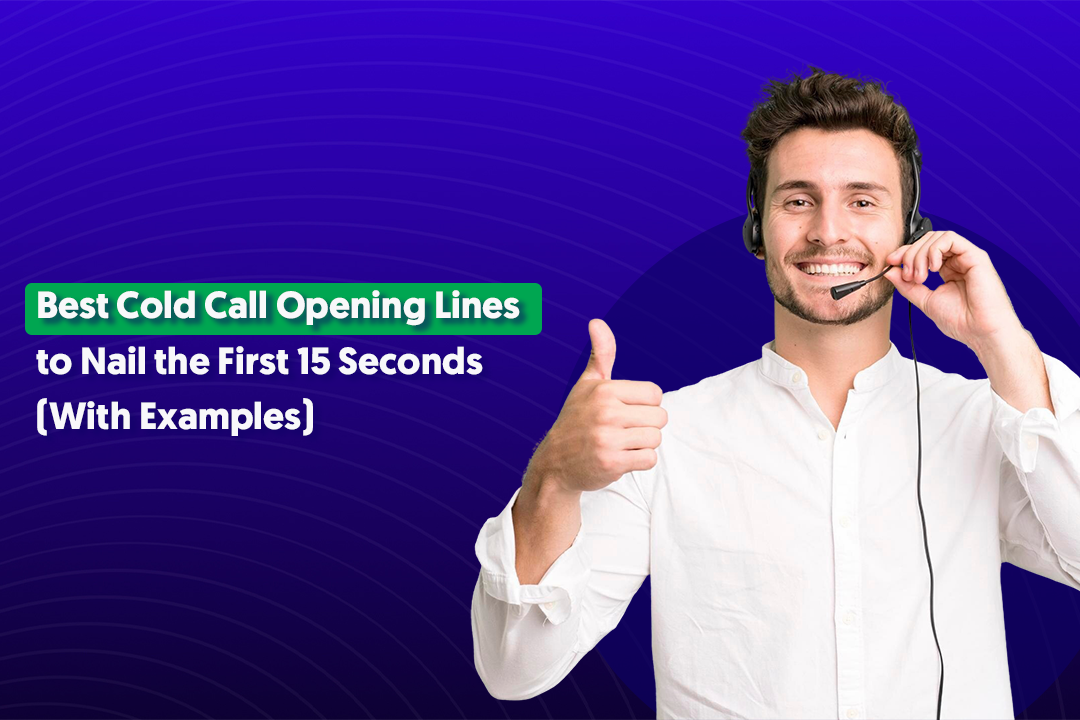Key Takeaways
- LinkedIn excels at relationship-building while cold email delivers unmatched scale and efficiency.
- Choose cold email for quick testing, scale, and low-cost experimentation; opt for LinkedIn when trust-building and professional context are essential.
- Both approaches require thoughtful targeting and personalization—mass tactics fail regardless of channel.
- Combining LinkedIn's professional context with email's direct access creates multiple touchpoints that significantly boost response rates.
- Generic messages fail on both platforms; research-backed personalization is crucial for standing out.
- Whether on LinkedIn or in email, focus on solving problems before pitching products to establish credibility.
- Continuously refine your approach based on response data to improve results over time.
Are you tired of pouring resources into lead generation strategies that deliver mediocre results?
We’re in a hypercompetitive B2B world and, choosing the right outreach channel can mean the difference between struggling for attention and having qualified prospects eagerly awaiting your solution.
While LinkedIn offers the power of professional context and relationship-building, cold email delivers unmatched scale and efficiency.
But which approach actually deserves your time and budget?
This guide cuts through the hype to reveal when LinkedIn shines, when email outperforms, and how combining both can create a lead generation powerhouse that your competitors can't match.
What is Cold Email?

Cold email is exactly what it sounds like – reaching out to someone who's never heard of you before.
Think of it as the digital equivalent of walking up to a stranger at a networking event, except you're landing directly in their inbox.
Cold email outreach involves sending targeted messages to potential B2B prospects who haven't previously engaged with your business.
It's a direct approach to connecting with decision-makers who might benefit from your solution but don't know you exist yet.
Unlike spam (which cold emails are often mistaken for), a well-crafted cold email outreach strategy delivers relevant, personalized value to specific recipients who match your ideal customer profile.
The goal isn't to blast generic messages to thousands of people, but rather to start meaningful conversations with the right people.
🔷 Advantages of Cold Email
Highly scalable and cost-effective: Once you've built a reliable system, you can reach hundreds or even thousands of potential clients for pennies per contact. Cold email delivers one of the highest ROIs in the B2B marketing toolkit when done right.
Automation that works for you: With the right cold email tools, you can set up sequences that nurture leads through multiple touchpoints without requiring manual intervention. Your outreach continues working even when you're focused elsewhere.
Measurable and optimizable: Cold email provides concrete data on opens, clicks, and responses. You can easily A/B test different subject lines, email copy, and call-to-action elements to continually refine your approach based on what resonates with your audience.
🔷 Challenges of Cold Email
Deliverability hurdles: Even the best cold email can't work if it never reaches the inbox. With increasingly sophisticated spam filters, ensuring deliverability requires technical know-how and constant monitoring.
Standing out in crowded inboxes: The average professional receives dozens or even hundreds of emails daily. Without personalization that demonstrates genuine research and relevance, your message will likely be ignored.
Quality matters more than quantity: Your results will only be as good as your list. Purchasing low-quality email lists often leads to poor engagement, spam complaints, and potential damage to your sender reputation.
The effectiveness of cold email ultimately depends on your approach. When thoughtfully executed with relevant messaging tailored to your recipient's specific situation, cold email can be a powerful channel for B2B lead generation.
However, it requires consistent refinement and a commitment to quality over quantity to achieve meaningful results.
What is LinkedIn Lead Generation?

LinkedIn lead generation is the art of leveraging the world's largest professional network to discover and connect with potential B2B clients.
Unlike cold email, this approach taps into LinkedIn's robust ecosystem where professionals are already engaging, sharing insights, and looking for business opportunities.
Whether you're publishing thought leadership content, engaging with industry discussions, or using LinkedIn's sophisticated targeting tools, the platform offers multiple pathways to identify and nurture potential clients.
B2B LinkedIn lead gen encompasses both organic relationship-building and paid advertising campaigns designed specifically for B2B environments.
🔷 Advantages of LinkedIn Lead Generation
Context-rich interactions: When you reach out on LinkedIn, you're connecting in a professional environment where your prospect can immediately see your face, role, company, and mutual connections. This creates warmer, more contextual first touches compared to appearing suddenly in someone's inbox.
Data reliability: LinkedIn provides access to verified professional information that's typically self-updated by users. This means you can confidently target prospects based on accurate job titles, company sizes, industries, and even specific skills or certifications.
Built-in credibility: Your LinkedIn profile serves as an instant trust signal. Prospects can review your experience, see endorsements from colleagues, and gauge your industry expertise before responding. This professional context significantly reduces the "stranger danger" factor of cold outreach.
🔷 Challenges of LinkedIn Lead Generation
Time-intensive process: Organic LinkedIn lead generation requires consistent effort. Building relationships, creating valuable content, and engaging authentically with your network demands significant time investment that can't be fully automated.
Cost considerations: LinkedIn's advertising platform delivers precise targeting but at a premium price point. The cost per lead tends to be higher than other platforms, though many B2B marketers find the quality justifies the investment.
Platform restrictions: LinkedIn actively limits the volume of connection requests and messages you can send to protect user experience. These guardrails prevent the kind of scaling possible with email outreach and require more strategic planning.
Learning how to generate B2B leads on LinkedIn effectively requires understanding both the platform's unique advantages and its limitations.
The most successful approaches typically combine strategic content sharing, thoughtful network building, and targeted outreach rather than relying on volume-based tactics.
Key Differences Between LinkedIn Lead Generation and Cold Email

Cold Email Outreach Strategy for B2B
A successful cold email campaign isn't about blasting generic messages to thousands of prospects.
The most effective cold email outreach strategy combines precision targeting, personalized messaging, and systematic follow-up to create genuine opportunities for conversation.
Components of an Effective B2B Cold Outreach

Start with a quality foundation: Before writing a single word, invest time in building a clean, verified prospect list. This means confirming email addresses, removing outdated contacts, and organizing prospects by industry, company size, or pain point. Remember: a smaller list of highly relevant prospects will outperform a massive list of marginal ones every time.
Craft compelling subject lines: Your subject line determines whether your email gets opened or ignored. The best cold email subject lines are short (4-7 words), specific, and create curiosity without resorting to clickbait tactics. Personalized subject lines that reference the recipient's company or recent accomplishments can increase open rates by up to 50%.
Personalize beyond {{first_name}}: Surface-level personalization isn't enough anymore. Today's effective cold emails show you've done your homework by referencing specific challenges related to the prospect's role, recent company news, or industry trends they're likely facing.
Front-load your value proposition: The first three lines of your email are critical real estate. Lead with how you can solve a specific problem the prospect is experiencing rather than talking about your company history or impressive client list. Make it immediately clear why continuing to read is worth their time.
End with a low-friction CTA: Instead of pushing for a meeting immediately, consider asking a question that's easy to respond to or offering a specific resource that addresses their challenges. The goal of your first email isn't to close a deal—it's to start a conversation.
Cold Email Lead Generation Hacks
Leverage dynamic personalization: Go beyond basic merge tags by using tools that can insert company-specific information, industry pain points, or even personalized images into your emails automatically.
Invest in the right tech stack: Platforms like Lemlist, Instantly, and Apollo don't just send emails—they provide warming-up capabilities, deliverability monitoring, and advanced analytics to continuously improve your campaigns.
Never stop testing: Successful cold emailers regularly A/B test different variables in their campaigns. Even small improvements in open or response rates can significantly impact your overall results when applied across thousands of sends.
Create pattern interrupts: In a sea of text-only emails, visual elements like GIFs, video thumbnails, or simple design elements can make your message instantly more memorable. These pattern interrupts can increase engagement by making your email visually distinct from the dozens of others hitting their inbox.
When executed thoughtfully, cold email outreach remains one of the most direct and scalable methods for B2B lead generation.
📢 Check out this post for more insights:
Organic LinkedIn Lead Generation: Best Practices
LinkedIn has evolved beyond a simple resume repository into a powerful lead generation engine for B2B companies.
While paid campaigns can accelerate results, savvy marketers know that organic LinkedIn lead generation often delivers higher quality connections with better long-term potential.
How to Generate B2B Leads on LinkedIn
Create a profile that works for you 24/7: Optimize your headline with keywords prospects might search for, craft a benefits-focused About section, and ensure your featured content showcases your expertise through case studies or thought leadership.

Become a valued member of targeted communities: Industry-specific LinkedIn groups provide direct access to concentrated pools of your ideal clients. Rather than joining broadly, focus on niche groups where your specific expertise will stand out.
The key is consistent contribution—answer questions, share insights, and become recognized as a helpful resource before attempting any direct outreach.
Master the art of personalized connection requests: Generic "I'd like to add you to my network" LinkedIn messages get ignored. Instead, reference specific content they've shared, mutual connections, or industry challenges you've both experienced.
Your initial connection message should focus on building rapport, not selling—save your pitch for after they've accepted.

⭐ Learn more here: What Makes a Great LinkedIn Message
Develop a strategic content calendar: Consistent, valuable content establishes your authority and creates organic LinkedIn engagement opportunities.
Mix educational posts, industry insights, and occasional personal stories to humanize your brand. The LinkedIn algorithm rewards content that generates conversation, so always include a thought-provoking question to encourage comments.
Engage before you reach out: Before sending a direct message, spend time thoughtfully commenting on your prospect's posts. This "warming up" process creates familiarity and dramatically increases response rates when you do make contact.
👀 Dive deeper into our our proven 5-step framework for doubling your LinkedIn leads:
How to Create a Lead Generation Campaign in LinkedIn (Paid)
Leverage LinkedIn's native lead generation forms: Unlike traditional ads that direct users off-platform, LinkedIn's Lead Gen Forms automatically populate with the user's profile data, reducing friction and increasing conversion rates.
Implement laser-focused targeting: LinkedIn's advertising platform offers unparalleled B2B targeting capabilities. Beyond basic demographics, you can target by job function, seniority level, company growth rate, and even specific skills. Create separate campaigns for different buyer personas to ensure messaging resonates with each segment's specific pain points.
Craft compelling offers with clear CTAs: The most effective LinkedIn lead magnets provide immediate practical value—think industry benchmarking reports, assessment tools, or templates that help prospects solve pressing challenges.
Whether you choose organic methods, paid campaigns, or a strategic combination of both, successful LinkedIn lead generation hinges on providing value before asking for anything in return.
⚡ Level Up Your Strategy: Linkedin Ads 2025 Master Playbook For 10x ROAS
LinkedIn Lead Generation vs Cold Email: Which One Should You Choose?
Deciding between LinkedIn lead generation and cold email isn't about picking a universal "best" approach—it's about choosing the right tool for your specific situation. Both channels have distinct strengths that make them suitable for different business contexts.

When to Choose Cold Email
When speed and scale are priorities: Cold email allows you to reach hundreds or thousands of prospects quickly. If you're testing a new market or need to generate conversations rapidly, email's efficiency is unmatched.
When you have quality data and messaging: With verified email addresses and well-crafted copy, cold email can deliver impressive results. The key is having accurate contact information and messages that immediately resonate with specific pain points.
When budget constraints exist: Compared to LinkedIn's paid options, cold email requires minimal investment to get started. This makes it ideal for bootstrapped startups or for testing new messaging before scaling up.
When to Choose LinkedIn Lead Generation
When relationship depth matters: For complex sales cycles or higher-ticket offerings, LinkedIn's relationship-building environment creates the trust foundation needed for meaningful conversations.
When you've built platform authority: If you've already invested in creating thought leadership content and building a network, LinkedIn allows you to leverage that established credibility.
When selling requires credibility: Some solutions—particularly consulting services, enterprise software, or innovative products—benefit from the professional context and transparency LinkedIn provides.
🤝 The Hybrid Approach: Best of Both Worlds
Rather than viewing these as competing channels, consider how they can complement each other.
The most sophisticated B2B lead generation strategies leverage both platforms:
- Connect on LinkedIn first, then email: Establish the initial relationship on LinkedIn before following up via email. This warms the conversation and provides context for your outreach.
- Use email for scale, LinkedIn for nurturing: Identify potential prospects through email campaigns, then move promising conversations to LinkedIn for deeper relationship development.
- Coordinate messaging across channels: Ensure your value proposition remains consistent while adapting to each platform's unique strengths. Your email might focus on a specific pain point, while your LinkedIn content demonstrates broader industry expertise.
This multi-channel approach creates multiple touchpoints with prospects, significantly increasing the likelihood of response.
By meeting potential clients where they're most comfortable—whether that's their inbox or their professional network—you create more opportunities for meaningful connection.
🚀 Let’s Scale Your B2B Lead Generation?
Throughout this guide, we've explored how both LinkedIn lead generation and cold email can drive powerful results for B2B companies.
But implementing these strategies effectively requires expertise, time, and constant optimization.
Why Choose Cleverly for LinkedIn Lead Generation
Looking for consistent LinkedIn leads without the learning curve? Cleverly's LinkedIn lead generation service handles everything from profile optimization to targeted outreach, delivering warm conversations with decision-makers in your target market.
Our proven approach has generated qualified meetings for companies across industries, from startups to enterprise organizations.

Transform Your Cold Email Results
Cold email remains one of the most cost-effective B2B lead generation channels—when done right. Cleverly's cold email outreach services combine data-verified prospect lists, persuasive messaging, and systematic follow-up sequences to generate responses from even the most elusive decision-makers. Let our team handle the complexity while you focus on closing deals.
Proven Results That Speak Volumes
At Cleverly, we've helped 10,000+ clients generate leads with companies like Amazon, Google, UBER, PayPal, Slack, Spotify & more. That resulted in $312 Million in Pipeline Revenue, $51.2 Million in Closed Revenue through LinkedIn Outreach.
All set to elevate your lead generation game ?
Stop struggling with trial-and-error approaches and leverage our proven systems instead.
If you're interested in generating qualified B2B Leads through LinkedIn & cold email then click here for more information.
LinkedIn Lead Gen vs. Cold Email FAQs
1. How to generate leads using cold email?
Generate leads with cold email by building a quality list, crafting personalized subject lines, keeping messages concise, focusing on prospect pain points, including a clear CTA, and implementing systematic follow-up sequences. Test different approaches and continuously refine based on response data.
2. How to write a cold email?
Write effective cold emails by researching your prospect first, using a compelling subject line, personalizing your opener, clearly stating your value proposition within the first 3 lines, keeping it under 150 words, ending with a low-friction question or CTA, and avoiding attachments in initial outreach.
3. Cold email: what is it?
Cold email is a direct outreach method where you send personalized messages to potential prospects who haven't previously interacted with your business. Unlike spam, cold emails are targeted, relevant communications intended to start business conversations with specific decision-makers.
4. Cold calling vs cold emailing?
Cold calling provides immediate feedback and conversation but has low reach and high rejection rates. Cold emailing offers scalability, convenience for recipients, and easier personalization, but may suffer from lower response rates and deliverability challenges. Many successful sales teams use both strategically.
5. How long should a cold email be?
The ideal cold email length is 50-125 words (3-5 short paragraphs). Research shows emails under 125 words typically receive higher response rates. Focus on being concise, making every word count toward communicating value and encouraging response.
6. How to write a cold email for sales?
Write sales cold emails by focusing on the prospect's challenges rather than your product, demonstrating relevant industry expertise, including social proof appropriate to their situation, making a specific (not generic) offer, and having a clear next step that requires minimal commitment.
7. What is cold email marketing?
Cold email marketing is a targeted outreach strategy where businesses send personalized emails to potential customers who haven't opted into communications. Unlike mass email marketing, it focuses on quality over quantity, with tailored messages designed to start conversations with specific decision-makers.
8. How to generate organic leads on LinkedIn?
Generate organic LinkedIn leads by optimizing your profile with keywords, consistently sharing valuable industry content, actively engaging with your target audience's posts, participating meaningfully in relevant groups, sending personalized connection requests, and building relationships before pitching.
9. How to create lead generation campaign in LinkedIn?
Create LinkedIn lead generation campaigns by defining your audience with LinkedIn's targeting options, creating compelling ad content (Sponsored Content, Message Ads, or Dynamic Ads), implementing Lead Gen Forms for frictionless conversion, establishing a clear budget and bidding strategy, and measuring results through LinkedIn's Campaign Manager.
10. How to generate B2B leads on LinkedIn?
Generate B2B leads on LinkedIn by leveraging Sales Navigator for precision prospecting, creating thought leadership content that addresses industry pain points, engaging with potential clients' content before outreach, utilizing LinkedIn groups for relationship building, and combining organic efforts with targeted paid campaigns for optimal results.





